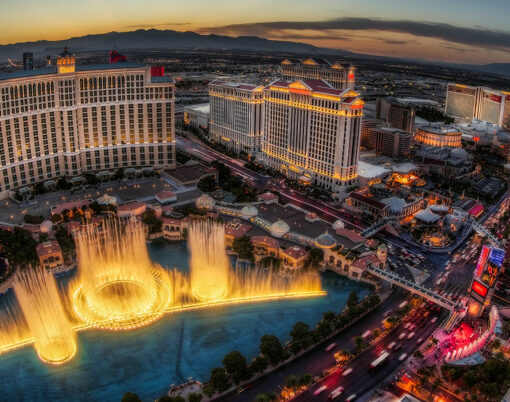Emilia-Romagna slashes diagonally from the Adriatic, lapping on Rimini’s beaches in the east, through the fertile plains by the River Po, taking in Bologna, Modena, Parma and finally Piacenza.
Hot, hot summers and cold winters, with moisture trapped by the Apennine mountains, coalesce for perfect growing conditions and intense flavours. Truffles and balsamic vinegar compete for the title of black gold, and travellers journey from afar for cuisine and wines that are legendary globally.
Emilia-Romagna is the perfect place for a foodie road trip where traditional full-bodied flavours are created by artisans rather than mass production.
Raining Michelin stars

At the heart of Italian fine dining, Modena appropriately hosted the unveiling of the 2025 Michelin Guide at the city’s grandiose theatre.
Massimo Bottura, so often the voice of Italian cuisine, celebrated his Osteria Francescana, twice voted the world’s best restaurant, retaining its three stars. Bottura’s creativity with dishes such as tortellini walking on broth and Oops! I dropped the lemon pudding continue to impress.
Throughout Emilia-Romagna there are now 33 Bib Gourmand restaurants recognised by Michelin as offering an exceptionally good value price to quality ratio.
24 DOC wines

Surrounding a Modena cathedral door there’s a carved-stone calendar reminding peasants of their duties for the agricultural year. For nearly a millennium, in the September fresco, a peasant has been frozen in the act of treading the grapes. Today that tradition has grown to produce 24 DOC wines throughout Emilia-Romagna.
Beyond Italy, Lambrusco has a reputation as sweet and fizzy. On its home terroir, many a glass of white Lambrusco has irresistible hints of citrus fruits and pomegranate. These DOC wines are far drier, possessing far greater length, than many of their non-DOC competitors. Though it seems like sacrilege when our wine-tasting guide, Filipino Bartolotto, recommends the unexpected pairing of Lambrusco and pizza.
Many visitors to the region try a red Lambrusco for the first time. Again they are surprised by the complexities of the plum and beetroot tastes and the deep inky colours of the wines.
Parmigiano Reggiano

Benedictine monks created this hard cheese to last and there’s a spiritual feel to the cheesemasters at work. Miraculously giving birth to two ‘twin girls’, cheese making is still a hands-on artisan skill, requiring muscular dexterity as each wheel weighs around 50kg. After two summers sweating in the great cheese cathedral store it will have shed 10kg. Rinds are hardened with a blowtorch.
Not only is Parmesan Reggiano’s origin protected by a DOC, but the bacteria that contributes to its taste and longevity is unique to the region’s alfalfa that the cows graze on.
This is not merely a cheese for grating, shaving and sprinkling on a spaghetti bolognaise, it is an ingredient in ice cream and panna cotta. Vintage Parmesan is used as a stuffing in tortellini and even in ice cream and panna cotta.
Balsamic vinegar

Connoisseurs treat vintage balsamic vinegar as if it is a fine perfume. Dripping a drop of the dark viscous black gold onto the back of their hand to inhale and then taste.
“Vintage balsamic is not a salad dressing,” says the guide at the Acetaia Communale on Modena’s Piazza Grande. He should know. Modena is balsamic vinegar’s capital. In Emilia Romagna, drops of vintage balsamic accompany Parmigiana Reggiano as a starter. For dessert, balsamic pairs with ice cream, panna cotta or strawberries.
In the past there have been vinegar vendettas over balsamic recipes. Nowadays grapes are simply boiled, then stored for years and years. Over 12 or 25 years, hot summers distil the liquid and intensify the flavours.
Truffles

When Luigi Dattioli’s father offered to buy him a car for his 18th birthday he asked for a truffle-hunting dog instead. The dog cost 6.5 million lire and still failed to find a single truffle for a year.
Truffles are elusive. Truffle hunters know that the roots of poplars, oaks and hazelnut trees provide the best opportunities but very few hunters, however experienced, can earn a full time living. Even when a kilo of truffles can command prices of €5,000.
Today, Luigi runs the Appennino Food Group, with over 1,000 truffle hunters from across the planet sourcing the truffles for his online delivery service and for his truffle products such as butters, oils and pates.
Luigi began with a pointer but the Lagotta Romagnolo breed is the truffle hunter’s favourite. Pigs are banned in Italy: they are aggressive, bite and trample the truffle spore. Rewarding his dog with a treat of mortadella, lifelong truffle hunter Andrea tells us, “You can have my wife, but not my dog.”
Pasta

At the original Barilla pasta shop, in Parma, visitors learn that pasta is at the heart of Italian cuisine and at the nearby Academia Barilla, in Parma, the chefs explain the art of cooking pasta.
The Academia takes food seriously, it has a library, open to bookings from the public on Mondays, of 26,000 culinary themed books and 5,000 menus.
“Your mother didn’t add oil to the pasta. Your nonna didn’t. So you won’t,” admonished Marcello. This chef worships pasta as if it is a fine wine: inhaling for aromas of butter and eggs and sipping the boiled water to check the saltiness.
Culinary rivalry
For many, Bologna is the food capital of the world. Yet it was Parma that was recognised by UNESCO as a Creative City of Gastronomy. Wherever you travel in this valley of slow food and fast cars, the locals will sit at a café with an intense shot of expresso and proudly argue for their town’s cheese, mortadella, prosciutto or wines being the best in Italy, if not the world. And some of them are right.
Factbox
Visit emiliaromagnaturismo.it for information on how to travel, where to stay, what to do and especially on what to eat and drink.






















